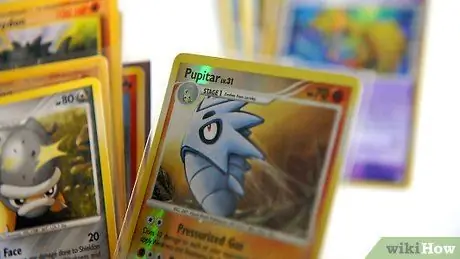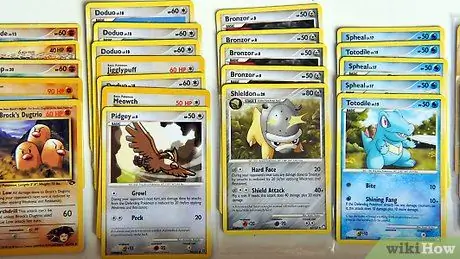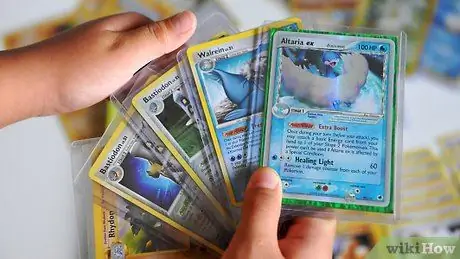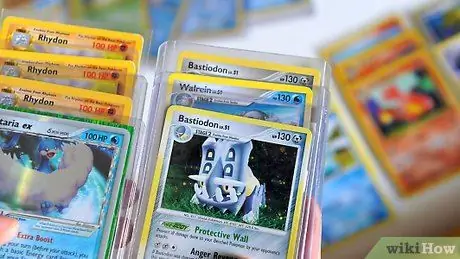Learn to organize Pokémon cards in many different ways; This will make it much easier to find the card you need when editing your deck.
Steps

Step 1. Organize the cards by set
You will notice that each card has a symbol (this is not always true, as the very first set published in English, the Basic set, has no symbol) in the lower right corner of the image (in older sets), or in the lower right corner of the card (most recent sets). Each set has a certain number of cards and each card has a progressive number (5/62 means card number 5 of a set of 62 cards). be careful! Some sets have 'secret rares' whose number exceeds the total number of the set (i.e. 63/62). Also, 'promo' or 'black star promo' cards only have the card number without the set total. Find out the order in which your sets came out (Base, Jungle, Fossil…) and sort the cards according to their progressive number in the set. This also makes it easier to find a missing card (for example, you are missing a Charizard card from the Dragon Frontiers set numbered x of x, and not a Power Keepers Charizard that has a different number, different image, and completely different attacks).

Step 2. Sort the cards according to evolution
Choose a space in the binder for the basic cards, then put all the evolutions in that pocket. This way if you want to move them you can do it without having to move other cards to make room. Also, you know exactly where the evolutions are since you put them right behind the base card.

Step 3. Arrange the cards according to the Pokedex number (this is the best method for those who collect cards but don't play)
This can be tricky, because most EX series cards don't have the number printed on them. However, you can find out the number on the internet. If you really enjoy looking at and organizing your collection this is a good method; it's nice to see the spaces filling up, and if you know the number this method makes it easy to find a particular card.

Step 4. Organize the cards by type
Put all Grass Pokémon in one section, Fire Pokémon in another, and so on.

Step 5. Arranging cards by rarity, or putting favorites together, makes them easy to find
(For example, put Lv. X and EX or strong cards in front, and weaker cards towards the back of the binder.

Step 6. Arrange the cards by Health Points (HP) and in alphabetical order
Advice
- You can exchange double cards for cards you are missing.
- You can sell the doubles or triples and use the proceeds to buy more cards.
- You can organize cards by rarity, but you can also sort them by evolution, element, or "frequency of use".
- Most collectors find it very helpful to organize cards by type and evolution.
- There are not only these ways of organizing cards, and maybe other methods work better for you. Don't think that the methods listed here are the best, the easiest, or the only ones possible.
- If you have doubles you can choose to keep them together, swap them, or put them in another nearby space.
Warnings
- Booster packs sold in stores often contain rare or legendary cards. Don't go to eBay to buy a certain card, you can find it cheaper in booster packs. However, if you want a specific card you should go to eBay; it really costs too much to buy hundreds of decks for just one card.
- If you are selling your collection it is best to organize the cards by set. If you organize them by the number of the Pokedex (put Pikachu at number 25, Bulbasaur as number 1, etc) and you say it is a 'full set', you are being false, as the game is not organized that way.
- Don't be fooled and don't spend a lot of money on a card on the internet; keep searching various sites until you find the best price.






